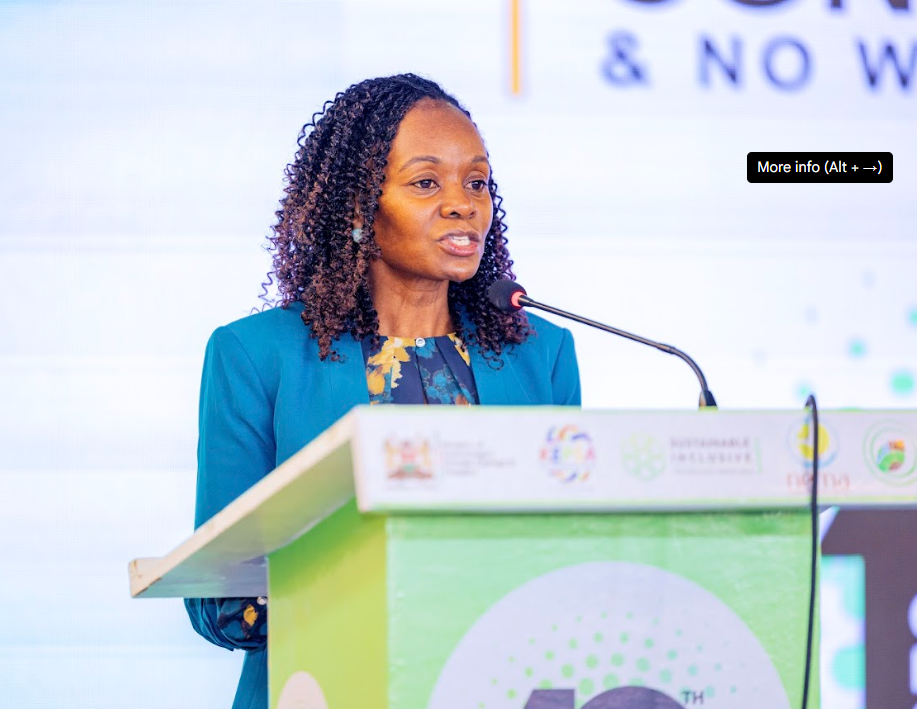
Kenya's private sector has thrown weight behind the Kenya Plastics Pact which outlines an ambitious roadmap to 2030 aimed at eliminating “problematic and unnecessary plastics”, amid a circular economy push.
Problematic and unnecessary plastics are items that are difficult to recycle, designed for single use and have alternatives available.
Examples include PVC packaging, plastic cutlery and
straws and cotton swabs with
plastic stems, with the items considered problematic because they pollute ecosystems,
harm wildlife and do not commonly enter recycling systems.
A circular economy on the other hand is an economic model that aims to eliminate waste and keep resources in use for as long as possible by prioritising the reuse, repair, remanufacturing and recycling of products and materials.
Under the plastic pact, the country targets to have all plastic packaging to be reusable or recyclable (100 per cent target), 40 per cent of plastic packaging to be effectively recycled and an average of 15 per cent recycled content across all plastic packaging, by 2030.
This, even as the government pushes for the Extended Producer Responsibility (EPR) rule anchored within the Sustainable Waste Management Act 2022.
The regulation places responsibility on producers for the entire lifecycle of their products, including waste management.
Speaking during the 10th Annual Circular Economy Conference and No Waste Festival in Nairobi, which ended yesterday, Kenya Private Sector Alliance CEO Carole Kariuki emphasised that the circular economy is not only an environmental agenda, but an economic strategy that drives innovation and strengthens manufacturing.
She noted that the country has made progress in designers repairing goods and youth-led recycling startups, with innovators turning waste into industry inputs.
Farmers are also increasingly practising regenerative agriculture while manufacturers are redesigning packaging to reduce environmental impact.
“Circularity has moved from theory to practice, from pilots to programmes, from Nairobi to counties, and from waste management to full systems redesign,” she said.
Yesterday, the Kenya Plastics Pact, a collaborative initiative that brings together stakeholders across the whole plastics value, together with WWF-Kenya and other strategic partners, launched the “No Single-Use Plastics Elimination Manual”, a landmark initiative designed to accelerate the transition to circularity.
The campaign targets the phase-out of problematic single-use plastics beginning with Kenya’s hospitality and tourism sectors, introducing a recognisable ‘No Single Use Plastic’ logo that signals business commitment to sustainable practices.
It also promotes the adoption of the 5Rs: Refuse, Reduce, Replace, Reuse, and Refill and encourages visible actions such as replacing disposable cutlery, straws and polystyrene packaging.
Kenya banned single-use plastic bags, first in 2017, with strict penalties including a fine of up to Sh4 million or a four-year jail term. The ban was extended in 2020 to include protected areas like national parks and forests.
However, the single-use plastic bags are still in use mainly by small traders.
Environment and Climate Change PS Festus Ng’eno said the government is prioritising the development of a Circular Economy Strategy in this financial year, as part of the implementation of our 2023-2027 Strategic Plan.
“This strategy will go far beyond traditional waste management by transforming our entire value chains. It will promote waste prevention, reuse, recycling and resource efficiency, directly reducing the environmental harm caused by unmanaged waste,” Ng’eno said.
The strategy will also serve as a powerful catalyst for economic development, the PS said, encouraging green investments and fostering partnerships that will lead to innovation.
“This will, in turn, create a new generation of clean and green jobs, offering significant opportunities for our youth and women to participate in and benefit from this economic transformation,” he said.
The country aims to create approximately 240,000 direct green jobs by 2030 through its transition to a green and circular economy.
















